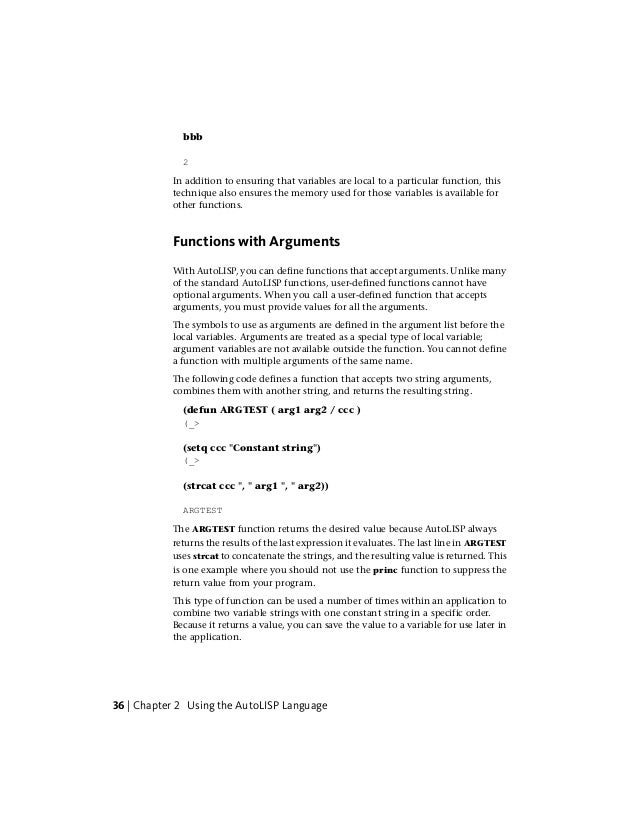
Why do I need to control Dialog?ĭepending on your application, DCL may or may not be useful to your AutoLISP or Visual LISP application. DCL is specifically for use with AutoCAD in conjunction with AutoLISP and Visual LISP. Check out AfraLISP for some basic tutorials for Visual LISP.ĪutoLISP includes a number of special functions that allow routines to load, interact with and unload dialog boxes written in DCL. NOTE: For those of you are new to Visual LISP, it is basically the same as AutoLISP except that it is more powerful than AutoLISP because it can access the AutoCAD object model. Without DCL, AutoLISP can only take user input from the command line. This means that an AutoLISP routine can gather a range of input data from a user through a familiar and logical interface.

What is Dialog Control Language?ĭialog Control Language or DCL for short is a simple markup language that enables programmers in AutoLISP and Visual LISP to create dialog boxes that can be integrated into their routines. Ready? Then let’s dive right in with an explanation of what DCL actually is. In this blog post, I plan to give you a brief introduction into DCL, its purpose, an example of its use and why you should consider using it for your next AutoLISP program. What “dialogs”? Well the dialogs in AutoCAD of course! For those of you that the name does not strike an instant cord with, the name essentially means that it is a programming language directed at the control of dialogs. ).If you were unfamiliar with AutoLISP, then you are probably equally unfamiliar with DCL (Dialog Control Language). Note that you can use traditional math notation To represent calculating factorials and Fibonacci numbers, Let's do two quick examples - we'll use sweet-expressions Now that we know why they failed, we can avoid their mistakes,Īnd by using many real-world Lisp dialects, I can make sure that they're "more readable Lisp syntax" efforts failed because they weren't independent M-expressions, ACL2 infix, and many other I experiment with a variety of real-world Lisps, becauseĪny new Lisp syntax must be independent of the underlying semantics. Nearly as easy to read (in general), and its rules are much simpler. The much simpler "infix non-default" alternative appears to be

I found that surprising, but that's why experiments are so valuable. Real code, it appears that their additional complexity wasn't I expected "infix default" to be better, but after experimentation with "infix default" and "infix not default", and then tried out many differentĬode fragments to see which one seemed to work better. I devised two variations of sweet-expressions, Sweet-expressions are still implemented as a change So, here's version 0.2 of sweet-expressions.īecause by adding syntactic sugar (which are essentially abbreviations), In addition, I've learned things based on experimenting with a Many people liked the idea, but had lots of useful feedback. Various people have had a chance to look over Satisfiability Modulo Theories Library (SMT-LIB), GCC Register Transfer Language (RTL), MiddleEndLispTranslator (MELT), Lisp-based languages: Scheme, Common Lisp, Arc, ACL2, PVS, BitC,ĪutoCAD Lisp (AutoLisp), Emacs Lisp, SUO-KIF, Scheme Shell (Scsh),
AUTOCAD LISP IF THEN ELSE CODE
What they look like in many different code fractions in many Shows that sweet-expressions are very general by showing This page shows the proposal for version 0.2 of sweet-expressions, and Sweet-expressions: Version 0.2 Sweet-expressions: Version 0.2 (draft) by David A.


 0 kommentar(er)
0 kommentar(er)
